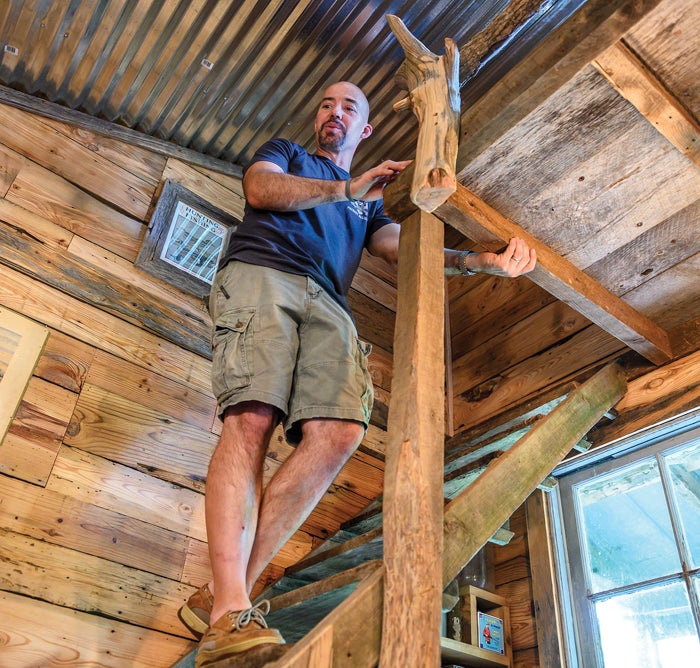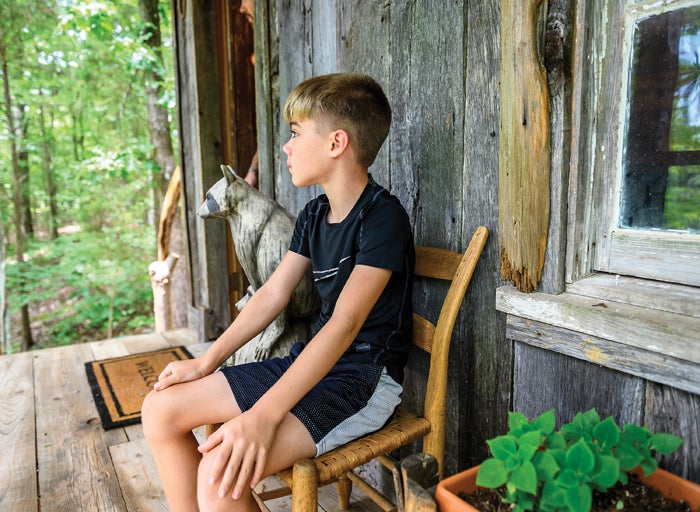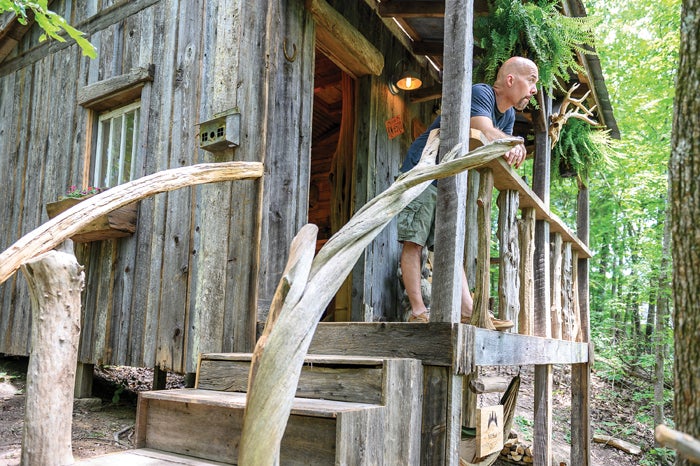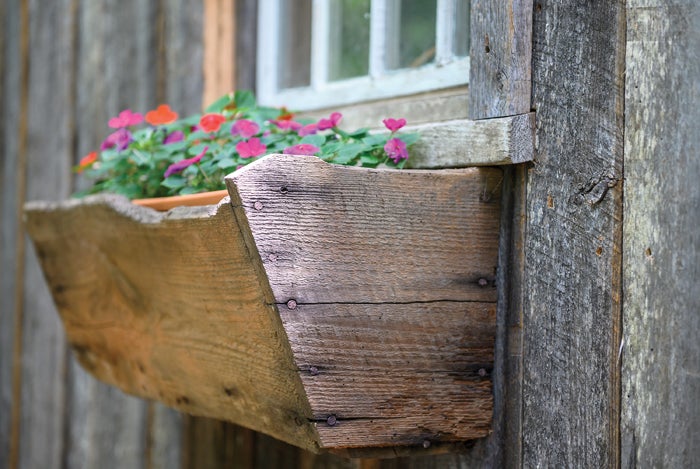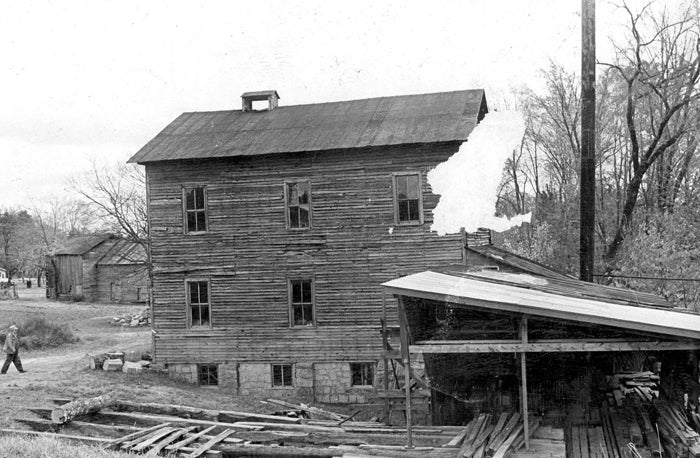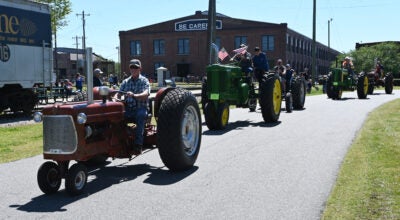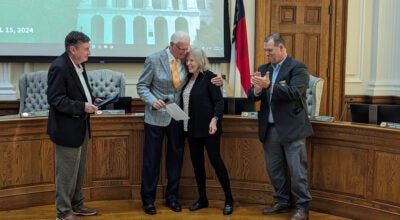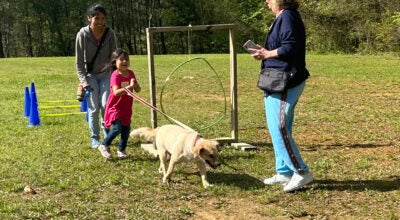‘The Mill Shack’: Father, son build clubhouse from outbuildings of old Shuping Mill
Published 12:05 am Sunday, July 7, 2019
SALISBURY — This is the kind of project fitting for one of those do-it-yourself shows on cable television — maybe even an episode dealing with tiny houses.
It also could qualify for The History Channel.
Tucked into the trees not far from their home’s pier along Little Crane Creek, Brad Taylor and his 11-year-old son, Cole, have built what they call a clubhouse.
They’ve named it “The Mill Shack.”
“That was his idea,” Brad says of Cole’s suggestion, and you’ll soon understand why.
The Mill Shack is a beautifully weathered, two-story structure rising from a ravine. It rests on granite rocks and features the kinds of wood frontiersmen used in building their homes — poplar, cedar, pine, red oak, white oak and maple.
“I wanted it to look old; that was the whole idea around it,” Brad says.
He estimates that 95 percent of the wood was salvaged from a barn and another outbuilding on the site of what used to be the historic Shuping Mill off N.C. 152 between China Grove and Rockwell.
A fire consumed the turn-of-the-century mill, listed on the National Register of Historic Places, in October 1987, many years after it had ceased operations along Dutch Second Creek.
The barn and a much smaller shed with stacked lumber survived the fire and sat neglected for an additional 30-plus years.
Brad Taylor teaches science at China Grove Middle School, but outside the classroom he has become a notable woodworker.
Through his Compass Woodworks Co., Brad makes cutting boards, cheese-and-bread boards, serving trays and what he calls “memento boards,” for which he can scan cherished items and transfer them to wood using a laser engraver.
Before he delved into the world of wood-shop gifts, Brad built and restored wooden marsh boats used for duck hunting. He still does, though he had to turn down four boat requests this year because of all the other woodworking he was immersed in.
If anyone could build his son a clubhouse, it’s Brad Taylor, even though this was a whole new kind of endeavor for him.
“There’s not a single thing I drew on paper,” he says. “Each part was a challenge, but it was fun. My wife said, ‘Are you building this for Cole or for you?'”
The clubhouse idea started out as a treehouse idea, until Brad realized that making a treehouse secure would involve just as much work as building a free-standing structure.
Going for a rustic look and given his keen interest in wood, Brad began taking more notice of old barns and outbuildings. For a long time, he had been intrigued by the remaining structures on the Shuping Mill property, though they were falling in on themselves.
One day on a drive, he told Cole they were going to stop and ask. They met Melissa Nolan, whose father and grandfather were part of the mill’s legacy, and Brad explained why they were interested in her buildings.
He confessed to her, “I don’t even know what to offer you.”
Nolan and Brad spoke about a week later, and she offered to give Brad the materials from the buildings if he would agree to make a playhouse for her grandchildren.
For various reasons, the playhouse never came to fruition. Brad says he made her a cutting board and is building Nola a shelving system — and anything else she might want, because he’s so appreciative of the wood.
The clubhouse turned into a project of two distinct phases. First, Brad had to dismantle the structures, load up the wood and truck it to the construction site. On a couple of the days, he had help from his dad, Robert Taylor, and a friend.
Cole sometimes played in the creek, and also made sure everyone kept hydrated. The deconstruction started last summer and took 12 long days.
“I’ve never been so dirty in all my life,” Brad says.
Brad loaded wood onto a 16-foot trailer. He broke down the barn into a skeleton of a structure first, then pulled down the rest. While still on the old mill property, he and his dad de-nailed all the boards, using an air compressor.
A lot of the lumber from the other building is dry-stacked at his father’s house. Brad obtained a permit so he could burn some of the debris on site. One of the buildings contained about 50 peach crates, five of which were full of cedar shake pieces.
They come in handy for a woodworker, Brad says.
Among other things Brad salvaged and used in the clubhouse were the barn’s tin roof; some stairs that he cut down to use as a way to reach The Mill Shack’s loft; and a 25- to 30-gallon oil drum that Cole now uses for his clubhouse trash can.
Brad also saved a rusty mechanical contraption — maybe an old pump. “We have no clue what it is, but you’ve got to be able to do something with it,” Brad says.
“It was always an adventure what you were going to find next. We tried not to throw anything away.”
Meanwhile, Brad was just enthralled with the wood.
“A lot of this stuff is like unwrapping presents,” Brad says.
Construction on the clubhouse started late last summer. Cole’s job was “hold this, hand me that, bring this three steps up the ladder,” Brad says.
Cole also was charged with cleaning up the wood scraps around the building site, and once the tongue-and-groove floor was in place, he hand-waxed it with a paste. Brad delivers the bad news that it probably will need another application.
This year’s spring break gave Brad and Cole more time to work on the clubhouse, and they completed it once school was out, though Brad wants to add a few finishing touches.
The outside is largely a combination of poplar, pine and cedar. The interior is paneled mostly in heart pine, some of which was insect-damaged, but Brad loves the look. He planed every piece and acknowledges he burned up a planer in the middle of the project.
A small rock stairway leads to side steps rising to a 4-by-12-foot porch. Open the door and you enter a 12-foot-square room. The cut-down stairs go to a loft, where the Taylors intend to place a twin-size bed.
The little touches Brad gave The Mill Shack are numerous, including a built-in desk, a custom coffee table, a feed-trough window box and a huge cedar support column inside.
The cedar was a monstrous piece of driftwood that floated up to their dock. Outside, the Taylors incorporated another interesting piece of cedar as a banister. Brad’s dad picked it up off the roadside on a trip out west.
To make sure things would be square, Brad bought new boards for the framing. He also purchased new galvanized tin for the interior ceiling. He says he probably uttered some words he shouldn’t have in putting up that tin.
This also was the first time he cut rafters.
Brad says he spent roughly $1,400 for the new lumber and probably has an additional $1,000 in The Mill Shack overall. So the reclaimed wood, windows and door were a big blessing.
The clubhouse has power. A ceiling fan and open windows provide the only ventilation.
Overall, the place has the look of a rustic hunting lodge, given the Taylors’ love for the outdoors. There are racks for fishing rods and shotguns, old posters for Remington rifles, a pot-bellied stove Brad found on Craig’s List, a deer-head trophy and duck decoys for decorations, to name a few.
Cole already is visiting the clubhouse regularly. He carves and whittles on wood here, and this has been a good place to do his summer reading in advance of attending sixth grade at Gray Stone Day School.
Cole and one of his friends already have spent a night in The Mill Shack. Brad went to check on them at 10 that evening and happened to see a copperhead on his way. He didn’t tell the boys, but he advised them, “If you have to pee, pee off the porch.”
When asked what his favorite part of The Mill Shack is, Cole says he’s a big fan of the outside hammock attached to the underside of the porch.
Brad just shrugs, thinking of all the work that went into the rest of the clubhouse, which he says could become his man cave once Cole goes off to school, or a “pouting house” for when he’s in trouble with his wife, Teresa.
At one time, the Shuping family operated a small industrial complex on the site where the clubhouse’s wood came from. There was a cotton gin, a flour and corn mill, and a sawmill, besides the Shupings’ home and support buildings.
The mill site also served as the small “Rock, N.C.,” post office for a time.
Brad Taylor likes knowing some of the history lives on in his son’s clubhouse. It’s the best kind of recycling.
“It’s giving it a second life,” Brad says.
Contact Mark Wineka at 704-797-4263 or mark.wineka@salisburypost.com.


